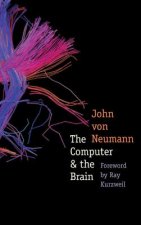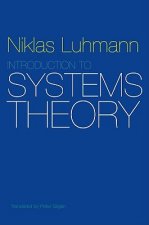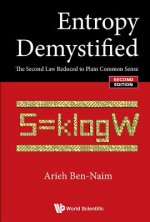
Code: 06889403
Interactive System Identification: Prospects and Pitfalls
by Torsten Bohlin
The craft of designing mathematical models of dynamic objects offers a large number of methods to solve subproblems in the design, typically parameter estimation, order determination, validation, model reduc tion, analysis of iden ... more
- Language:
 English
English - Binding: Paperback
- Number of pages: 365
Publisher: Springer-Verlag Berlin and Heidelberg GmbH & Co. KG, 2012
- More about this

61.92 €

Low in stock at our supplier
Shipping in 10 - 15 days
Potřebujete více kusů?Máte-li zájem o více kusů, prověřte, prosím, nejprve dostupnost titulu na naši zákaznické podpoře.
Add to wishlist
You might also like
-

Nan Jing
125.57 € -

OCD Workbook
21.95 € -18 % -

Magus
39.85 € -21 % -

Poe and the Visual Arts
32.53 € -

Unscrambling Grief
18.80 € -

Fokker E.V/D.VIII
16.97 € -18 % -

Piaty element
3.24 € -26 %
Give this book as a present today
- Order book and choose Gift Order.
- We will send you book gift voucher at once. You can give it out to anyone.
- Book will be send to donee, nothing more to care about.
More about Interactive System Identification: Prospects and Pitfalls
You get 154 loyalty points
 Book synopsis
Book synopsis
The craft of designing mathematical models of dynamic objects offers a large number of methods to solve subproblems in the design, typically parameter estimation, order determination, validation, model reduc tion, analysis of identifiability, sensi tivi ty and accuracy. There is also a substantial amount of process identification software available. A typi cal 'identification package' consists of program modules that implement selections of solution methods, coordinated by supervising programs, communication, and presentation handling file administration, operator of results. It is to be run 'interactively', typically on a designer's 'work station' . However, it is generally not obvious how to do that. Using interactive identification packages necessarily leaves to the user to decide on quite a number of specifications, including which model structure to use, which subproblems to be solved in each particular case, and in what or der. The designer is faced with the task of setting up cases on the work station, based on apriori knowledge about the actual physical object, the experiment conditions, and the purpose of the identification. In doing so, he/she will have to cope with two basic difficulties: 1) The com puter will be unable to solve most of the tentative identification cases, so the latter will first have to be form11lated in a way the computer can handle, and, worse, 2) even in cases where the computer can actually produce a model, the latter will not necessarily be valid for the intended purpose.
 Book details
Book details
Book category Books in English Reference, information & interdisciplinary subjects Research & information: general Information theory
61.92 €
- Full title: Interactive System Identification: Prospects and Pitfalls
- Author: Torsten Bohlin
- Language:
 English
English - Binding: Paperback
- Number of pages: 365
- EAN: 9783642486203
- ISBN: 3642486207
- ID: 06889403
- Publisher: Springer-Verlag Berlin and Heidelberg GmbH & Co. KG
- Weight: 581 g
- Dimensions: 235 × 155 × 21 mm
- Date of publishing: 05. June 2012
Trending among others
-

The Black Swan
11.18 € -6 % -

Human Use Of Human Beings
12.80 € -21 % -

Linked
20.84 € -

Ethics of Information
46.16 € -

Deep Simplicity
12.60 € -20 % -

Computer and the Brain
17.68 € -5 % -

Elements of Information Theory
123.95 € -4 % -

Introduction to Systems Theory
24.90 € -7 % -

Problems of Life
16.56 € -

Cybernetics, Second Edition
32.02 € -

Sync
11.38 € -28 % -

Nonlinear Dynamics and Chaos
90.09 € -

Introducing Chaos
10.06 € -22 % -

System Identification
131.78 € -

Information Theory
29.48 € -

God & Golem, Inc.
49.11 € -

Ant Colony Optimization
9.65 € -17 % -

Recursive Universe
14.02 € -22 % -

Systems and Models. Complexity, Dynamics, Evolution, Sustainability
25.21 € -9 % -

Repair
31.51 € -19 % -

System Identification 2e - A Frequency Domain Approach
166.05 € -6 % -

General Systems Theory: Problems, Perspectives, Practice
140.32 € -

Bioinformatics: An Introduction
122.12 € -

Modeling Business Processes
60.80 € -16 % -

System Identification, Environmental Modelling, and Control System Design
187.81 € -

Fault Tolerant Control Design for Hybrid Systems
122.12 € -

Riccati Equation
133.10 € -

Object-Oriented Computer Simulation of Discrete-Event Systems
275.26 € -

Computational Beauty of Nature
74.53 € -7 % -

Cybernetics or Control and Communication in the Animal and the Machine
56.32 € -

Object-Oriented Computer Simulation of Discrete-Event Systems
275.26 € -

Student's Guide to Coding and Information Theory
38.83 € -

Optimal Control Theory
29.17 € -18 % -

Entropy Demystified: The Second Law Reduced To Plain Common Sense
33.95 € -

Introduction to Complex Systems
133.10 € -

Design Structure Matrix Methods and Applications
62.83 € -7 % -

On Dialogue
157.61 € -

Selected Works of Joseph E. Stiglitz
270.99 € -

Mathematical Systems Theory
61.92 € -

Plan Prediction
122.12 € -

Introduction to Evolutionary Algorithms
220.65 € -

Randomness Through Computation: Some Answers, More Questions
177.64 € -

Introduction to Cybernetics
16.87 € -

Brownian Motion, Martingales, and Stochastic Calculus
78.39 € -

Quantum Information Theory
95.27 € -

Metaphysics of Virtual Reality
45.95 € -

Knowledge-Based Intelligent System Advancements
211.09 € -

Seneca Effect
111.13 € -

Dynamics with Chaos and Fractals
76.87 € -2 %
Collection points Bratislava a 2642 dalších
Copyright ©2008-24 najlacnejsie-knihy.sk All rights reservedPrivacyCookies


 15549 collection points
15549 collection points Delivery 2.99 €
Delivery 2.99 € 02/210 210 99 (8-15.30h)
02/210 210 99 (8-15.30h)